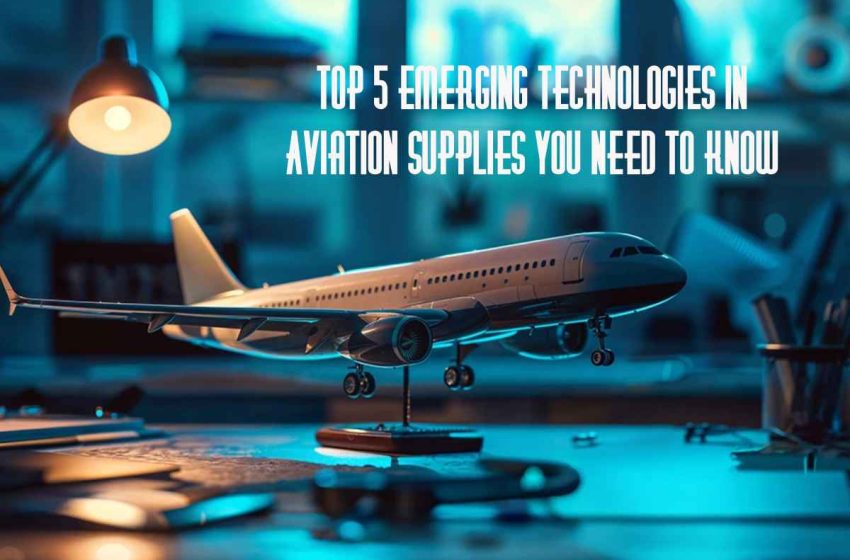
Top 5 Emerging Technologies in Aviation Supplies You Need to Know
With technology advancing rapidly, keeping up with the latest aviation trends isn’t just exciting — it’s essential. Whether you’re in aircraft maintenance, operations, or procurement, understanding what’s on the horizon can give you an edge.
Table of Contents
Smart Sensors Revolutionizing Maintenance
Imagine if your aircraft parts could talk to you, reporting wear and tear before issues arise. That’s essentially what smart sensors do. Integrated into critical components like landing gear and engines, these sensors continuously monitor performance and health. Instead of waiting for scheduled maintenance or reacting to unexpected failures, you’re alerted the moment something deviates from normal.
By using real-time data, smart sensors help you:
- Reduce downtime by addressing problems early.
- Extend the lifespan of expensive components.
- Improve safety with proactive checks.
The future? Entire fleets that self-diagnose issues, saving both time and money.
Additive Manufacturing — 3D Printing Meets Aviation
Traditional manufacturing methods often mean long lead times and high costs for aircraft parts. Enter additive manufacturing, or as most know it, 3D printing.
- Lightweight parts – Reducing weight directly impacts fuel efficiency and emissions.
- Customization – Small production runs or specialized parts are now feasible.
- On-demand production – No need to stockpile components when you can print them as needed.
Companies like Pilot John International are making strides in ensuring that these advanced parts meet stringent industry standards. With additive manufacturing, turnaround times for critical components are shorter than ever. Imagine requesting a replacement part and having it delivered — or even printed — within days instead of weeks.
Advanced Composites for a Greener Future
Composites like carbon fibre and hybrid blends are now being used extensively in everything from airframes to interior components. What makes them so impactful?
These materials significantly reduce aircraft weight. This then means lower fuel consumption and emissions!
But there’s more:
- Composites are resistant to corrosion, reducing maintenance needs.
- They allow for more aerodynamic designs, further improving efficiency.
- Modern composites are increasingly recyclable, contributing to a circular economy in aviation.
Expect to see even greater adoption of composites as regulators and airlines prioritize eco-friendly solutions. Lighter aircraft aren’t just good for the environment — they’re better for business.
AR and VR in Training and Maintenance
Augmented reality (AR) and virtual reality (VR) aren’t just for gamers. These immersive technologies are being used across aviation to improve both training and operational efficiency. Let’s break it down:
Training pilots and technicians
VR simulations provide hands-on experience in a risk-free environment. Trainees can practice everything from emergency procedures to maintenance tasks.
Maintenance support
AR tools overlay digital instructions onto real-world components, guiding technicians step-by-step. Need to identify a specific part or check a system? Just point your AR device at it.
Collaboration
Teams in different locations can now meet in virtual spaces, making it simpler to share knowledge and solve problems together, no matter where they are. By cutting down on mistakes, speeding up tasks, and boosting safety, AR and VR are transforming how work gets done. As these tools become easier to access, they’re expected to become a go-to solution across aviation operations.
Sustainable Aviation Fuels and Energy Storage
One of the biggest challenges facing the aviation industry is reducing its carbon footprint. While electric aircraft are still in the early stages, sustainable aviation fuels (SAFs) and advancements in energy storage are paving the way for a greener future.
Sustainable Aviation Fuels
SAFs are produced from renewable sources like agricultural waste, algae, or even used cooking oil. They’re designed to reduce lifecycle greenhouse gas emissions by up to 80% compared to traditional jet fuel. Airlines worldwide are beginning to adopt SAFs, and production capacity is growing rapidly.
Advanced Energy Storage
Battery technology is advancing too, with the development of lighter, higher-capacity batteries that could one day power short-haul electric flights. For now, energy storage is playing a crucial role in ground operations, with electric ground support equipment (GSE) replacing traditional diesel-powered units.
Together, SAFs and energy innovations represent a giant leap forward in making aviation more sustainable without compromising performance.
Why Staying Informed Matters
Whether you’re streamlining maintenance schedules, reducing operational costs, or contributing to a greener planet, staying on top of these advancements isn’t just beneficial — it’s empowering. The choices you make today could set the stage for a safer, more sustainable industry tomorrow.
The Sky’s the Limit
Innovation in aviation supplies isn’t slowing down anytime soon. From smart sensors to sustainable fuels, these technologies are driving the industry toward a more efficient and sustainable future. As you navigate this ever-changing landscape, embracing these advancements will position you for success. The future of aviation is here — are you ready to take off?

